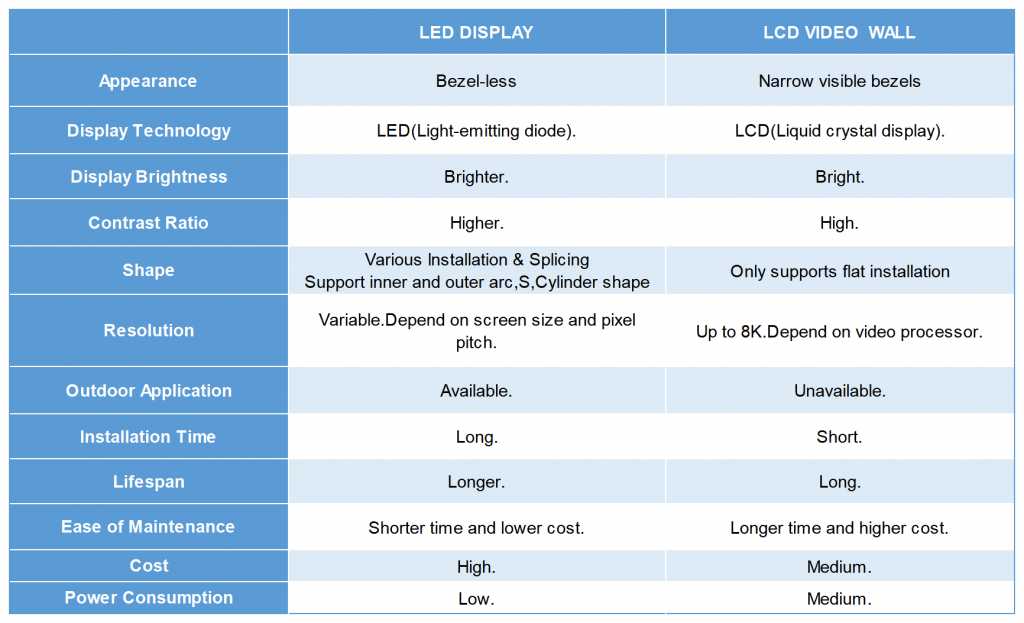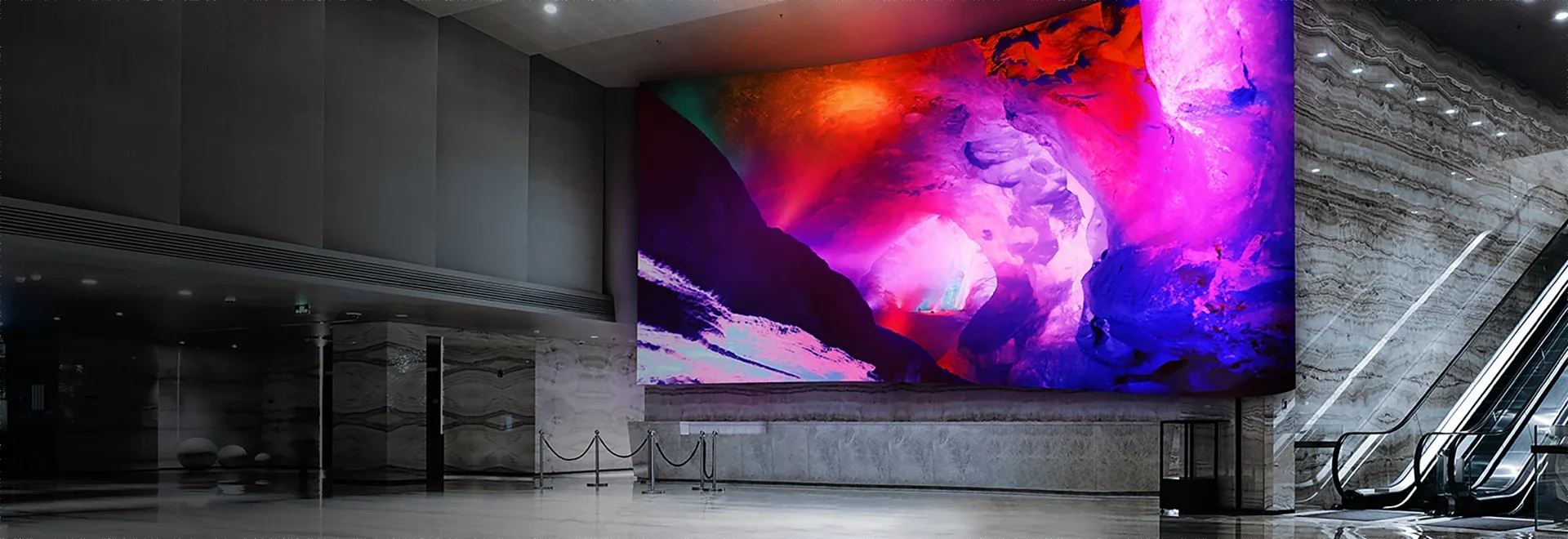How to choose LED display and LCD video wall?
We enjoy large screens for home fun and business presentations. They magically share info and grab attention. Digital displays are taking over traditional ads as an engaging choice. LED displays and video walls are popular big screen options and are widely used in retail, shows, and meetings. With technology progress, LED displays are gaining prominence, leading to questions about their superiority over video walls. Here are the main differences and things to think about when choosing:

LCD Video Wall:
Technology: LCD technology uses liquid crystal material with a backlight.
Construction: Video walls consist of multiple smaller LCD screens tiled together.
Example: To create a 110-inch display, four 55-inch screens can be combined.
Processor: Requires a video wall processor for content control and management.
LED Display:
Technology: LED screens use LED modules or panels without relying on backlight.
Brightness: Higher brightness with a superior nit value compared to LCD.
Contrast: Achieves perfect black levels, resulting in better contrast images.
Seams: Seams between LED modules are usually invisible, providing a seamless appearance.
Size and Shape:
LCD Video Wall: Size limitations based on the number of displays; limited shape flexibility.
LED Display: LED modules are small in size and easy to customize. LED displays cater to various shape customization needs, such as right angles, cubes, arcs, and cylinders.
Screen Resolution:
LED Display: Resolution flexibility based on pixel pitch, viewing distance, and screen size.
LCD Video Wall: Resolution depends on the video processor and LCD screens involved.
Outdoor Application:
LCD Video Wall: Suitable for indoor use only.
LED Display: The LED Display is versatile, catering to both indoor and outdoor applications. It features weatherproof protection, ensuring optimal performance in various conditions.
Lifespan:
LED Display:LED displays have a longer lifespan compared to others, thanks to their efficiency, energy-saving features, and minimal brightness decay. This makes them a durable choice for various applications, ensuring sustained performance over time.
LCD Video Wall: The lifespan of LCD video walls is generally shorter when compared to LED displays. This is due to factors such as the backlight technology used in LCD screens, which tends to degrade over time. The components in LCD video walls may experience wear and tear, leading to a gradual decline in performance and overall longevity. As a result, users may find themselves needing to replace or maintain LCD video walls more frequently than LED displays to ensure continued optimal functionality.
Maintenance:
LED Display: Maintenance of LED displays is more convenient and cost-effective. When a malfunction occurs, you can easily replace the specific faulty LED modules rather than the entire screen. This not only reduces repair costs but also simplifies the maintenance process. The smaller size of LED modules makes them more accessible for replacement, ensuring a smoother and more economical solution to address issues.
LCD Video Wall: Fixing problems with an LCD video wall can be costly, as you need to replace the entire screen in case of malfunctions. This involves removing and repairing the entire display unit, making maintenance more complex and expensive compared to LED screens.
When deciding between LED screens and LCD video walls, consider your needs, budget, and installation preferences. As a professional solution provider, we deliver top-notch, innovative, and tailored display solutions to meet your business demands.

